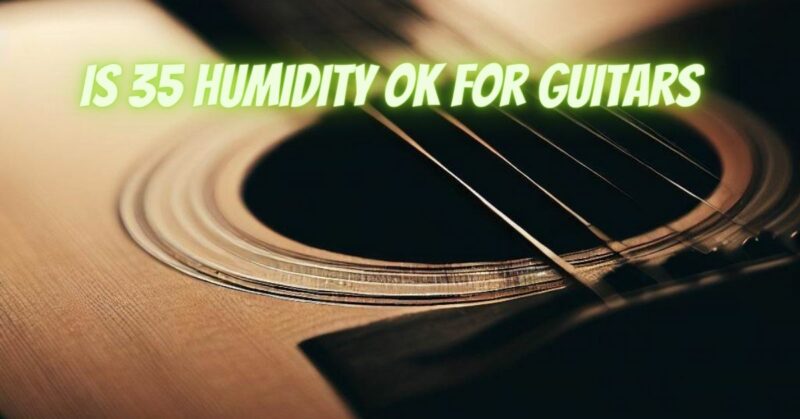Maintaining the right humidity level is a crucial aspect of caring for your guitar. Humidity levels that are too high or too low can affect the instrument’s structural integrity, playability, and tonal quality. One common question that arises is whether 35% humidity is suitable for guitars. In this article, we’ll delve into the implications of 35% humidity for guitars and whether it falls within the acceptable range for maintaining the health of your instrument.
The Significance of Humidity for Guitars: Humidity is the measure of moisture in the air, and it can profoundly impact the wood components of your guitar. Wood is hygroscopic, meaning it absorbs or releases moisture based on the humidity levels around it. This property can lead to various issues if humidity levels are not within the appropriate range.
Understanding 35% Humidity: A humidity level of 35% is relatively low and falls below the commonly recommended range of 40% to 50% for guitars. At 35% humidity, the air is drier, which can have several effects on your instrument:
1. Wood Drying: Wood components, including necks, fretboards, and bodies, can dry out and contract at low humidity levels. This can lead to fretboard issues, neck instability, and even the potential for cracking in extreme cases.
2. Fret Buzz and Intonation Issues: As wood contracts, the geometry of the guitar can change, affecting the distance between the strings and the frets. This can result in fret buzz and intonation problems.
3. Finish and Hardware: Low humidity can cause the wood to shrink, potentially impacting the finish and hardware components such as tuners, knobs, and bridges.
4. Playability and Tone: Dry wood can affect the overall playability and tone of your guitar, potentially leading to a less resonant sound and a less comfortable playing experience.
Determining Suitability: While 35% humidity is lower than the recommended range, the impact on your guitar will depend on several factors, including the type of wood used, the duration of exposure, and the specific conditions. Some guitars might fare better at 35% humidity than others.
Preventive Measures: If you find yourself in an environment with 35% humidity and wish to maintain your guitar’s health, consider these steps:
- Humidification: Use a room humidifier or guitar-specific humidifier to increase the humidity levels around your instrument.
- Case Humidifiers: Utilize case humidifiers to maintain a stable microclimate within the guitar case, even when the overall room humidity is low.
- Regular Monitoring: Invest in a hygrometer to measure humidity levels accurately. Keep an eye on the readings and take action if levels drop excessively.
While 35% humidity is lower than the recommended range for guitars, it’s essential to be aware of the potential implications for your instrument’s well-being. Monitoring humidity levels, taking preventive measures, and ensuring your guitar is properly humidified can help mitigate the effects of low humidity and maintain your guitar’s playability, appearance, and tonal quality.


